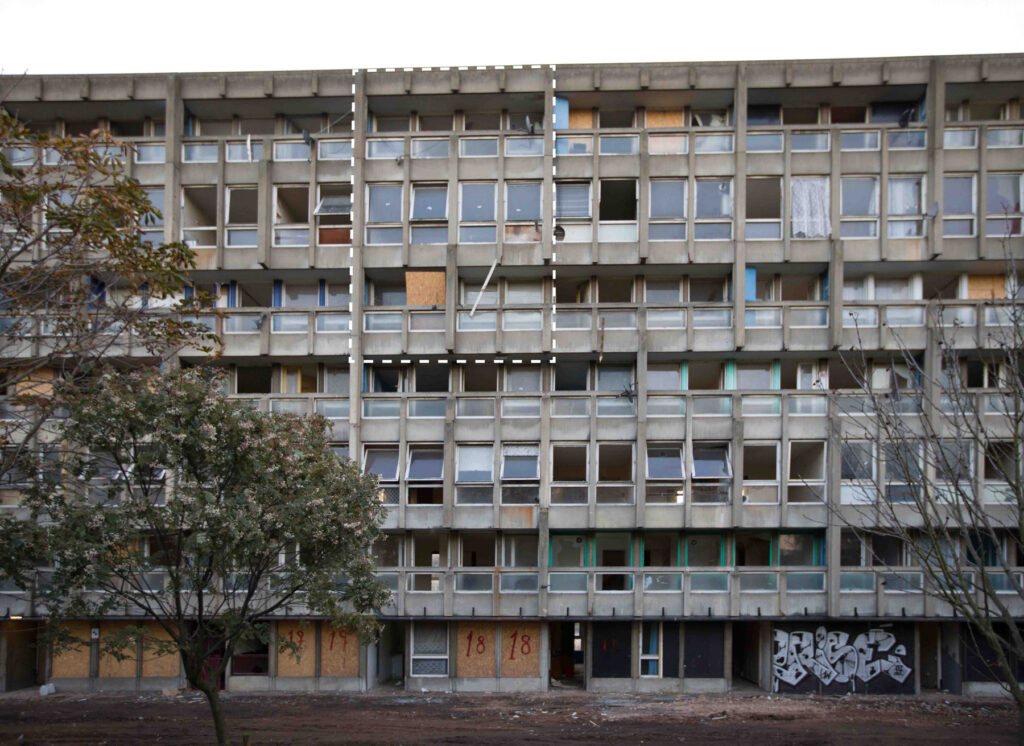Ahead of its scandalous demolition, the V&A Museum has announced that it is acquiring a slab of the Brutalist housing estate, the Robin Hood Gardens, comprising both exterior facades and interiors of a maisonette flat.
Completed in 1972, Robin Hood Gardens, located in Poplar, East London, is a nationally important and internationally recognised work of Brutalist architecture. However, it suffered the deprivations of council ownership and as with many social housing blocks never received the regular maintenance and cleaning that any block of flats should receive.
Worn out by neglect, it is now being torn down rather than restored, which has rightly infuriated many architects and fans of 20th-century architecture.
Robin Hood Gardens is a significant example of the Brutalist movement in architecture and joins the V&A’s world-renowned architecture collections. Brutalism arose in the 1950s in reaction to the sleek and elegant glass structures of modernism and was characterised by the dramatic use of exposed concrete to create facades of often repeating geometrical forms. Not only a style but also a philosophy, Brutalism sought to reframe the relationship between society, architecture and urbanism.
Despite its name indicating brutal and harshness, it’s actually just an Anglicization of the French term, béton brut, meaning raw concrete. It need not be brutal at all.
Robin Hood Gardens was built by the Greater London Council (GLC) and later transferred to the local authority of Tower Hamlets. The choice of Alison and Peter Smithson as architects gave this wife and husband team their first and only opportunity to create a council estate. Robin Hood Gardens was the culmination of their research on and vision for social housing. It is distinctive for its noise-reducing features, like exterior concrete fins, and for its elevated walkways, known as ‘streets in the sky’, intended to foster interaction between neighbours.
Alison and Peter Smithson said that they regarded Robin Hood Gardens ‘as a demonstration of a more enjoyable way of living … a model, an exemplar, of a new mode of urban organisation.’ Both during their lifetime and since, there has been heated debate as to whether or not the building successfully realised these aspirations. No other work of British social housing has divided opinion to such a great extent.
The announcement in 2008 of the intent to demolish Robin Hood Gardens prompted one of the largest ever campaigns in architectural preservation, initiated by the Twentieth Century Society and supported by an international array of architects, including Richard Rogers and Zaha Hadid, as well as leading architectural historians. In 2015, the application to give Robin Hood Gardens listed status was turned down and demolition was approved.
While it is a historically good thing that the slab is being removed and conserved, one of the main appeals of the estate’s aesthetic are (soon to be were) the long walls of repeating patterns in the concrete. A small pinhole section of that long wall lets people remember what the design looks like up close, but not the visual impact that it had in the area.
For that, soon we will be left with just photos, or these small cardboard models.









Its one of the ugliest buildings in london, and most people are more than glad its going. It should never have been built.
Far from pitying the building for suffering the depredations of council ownership you should be pitying the impecunious people who had to live there because that’s where the council put them, and they couldn’t afford to rent privately.
The only thing controversial about its demolition is that it didn’t happen 50 years ago, and morons keep trying to stop it.